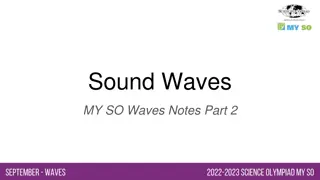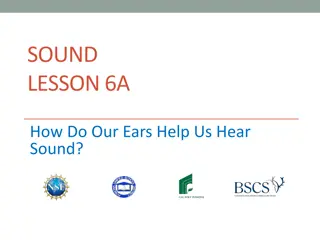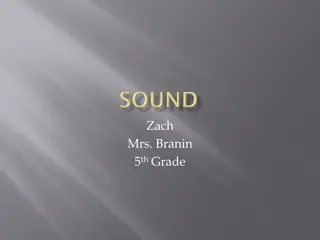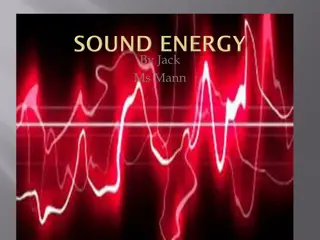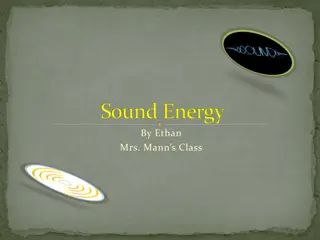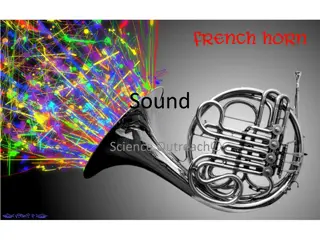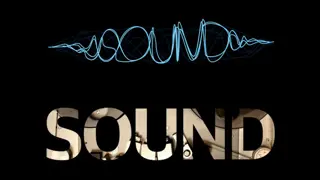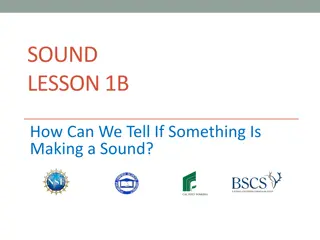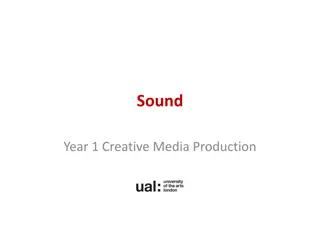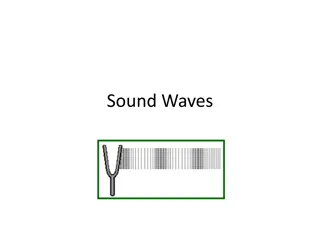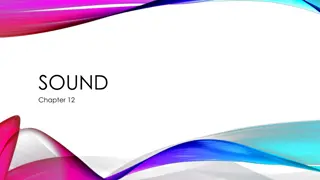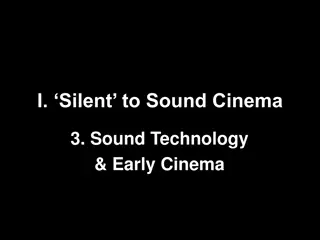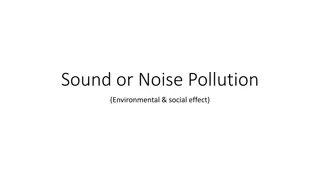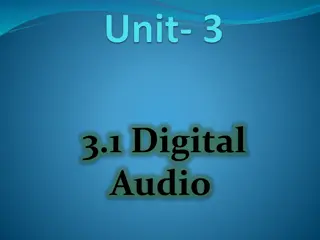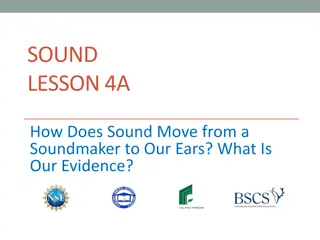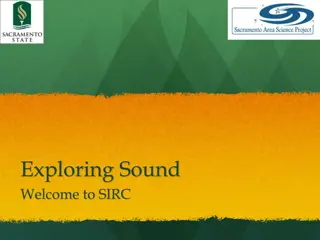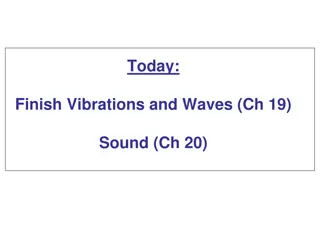Understanding the Science of Sound and Its Effects
Explore the fascinating world of sound, from the basic principles of resonance to the transmission of vibrations and the effects of sound energy on human beings and the environment. Delve into the concept of pitch, decibel levels, and wave patterns of sound to gain a deeper understanding of how sound impacts our lives.
Download Presentation

Please find below an Image/Link to download the presentation.
The content on the website is provided AS IS for your information and personal use only. It may not be sold, licensed, or shared on other websites without obtaining consent from the author. Download presentation by click this link. If you encounter any issues during the download, it is possible that the publisher has removed the file from their server.
E N D
Presentation Transcript
Basic Sound Principles Resonance designates the ability of a vibration to reach out through waves to set off a similar vibration in another body Physics sound vibrations are connected to the vibrations of atoms and molecules in the air Life is composed of atoms which contain protons and electrons. These are electrically charged particles of energy, in constant motion
Transmission of a resonant vibration requires three things: Must be an original vibrating energy source. Can be thought, sounds, colours, musical instruments, voices Must be a transmitting medium air is most common carrier There must be a receiver of the vibration, something which will receive and respond to the energy or sound vibration being sent
The Effects of Sound in any form are cumulative and detectable. Sound in any of its forms is a source of energy Effective as a tool to alter the electromagnetic fields and impulses of a human or an environment
Pitch of Sound Pitch is the highness or lowness of the sound Pitch is determined by the speed at which it vibrates. The faster the sound vibrates, the higher the pitch Low tones bend around objects when they are emitted High-pitched tones are more focused
Decibel Levels one decibel is the quietest sound the average person can hear decibels increase their effects logarithmically 10 decibels of sound is ten times greater than one decibel
Decibel Levels 20 decibels is 10 times greater than the ten decibel range or 100 times greater than 1 decibel 90 decibels the range we can hear now is equal to the sound of one train pulling into a subway station 100 decibels is equal to the sound of 10 trains pulling into the subway station at the same time
Wave Patterns of Sound Waves - Rhythmic disturbance that carries energy Wavelength - Distance between a point on a wave and the identical point on the next wave. Period - Time required for one wavelength to pass Frequency - Number of waves passing per second. The unit of measure is hertz (Hz).
wave patterns continued Frequency - Number of waves passing per second. The unit of measure is hertz (Hz). Amplitude - Greatest distance of a wave's rise or fall Wave Velocity - Wave velocity is the distance a wave travels per second. wavelength - velocity / frequency
Speech words and their sounds vibrate to different parts of the body made up of two elements consonants and vowels every letter and combination of letters has significance sound of words make the tone or texture word endings fluid or harsh eg slice, baffling fluid sounds; cat, difficult harsh sounds
Word/Letter Sounds can add to the meaning connotation O sounds and letters connect to images eg: The Moon rose over the ocean. Soft sounding consonants R, J, M, N, S, V, W Hard sounding consonants K, D, Q, T, C, B, P Some letters and combination of letters create full, thin or open sounds
This powerpoint was kindly donated to www.worldofteaching.com http://www.worldofteaching.com is home to over a thousand powerpoints submitted by teachers. This is a completely free site and requires no registration. Please visit and I hope it will help in your teaching.





